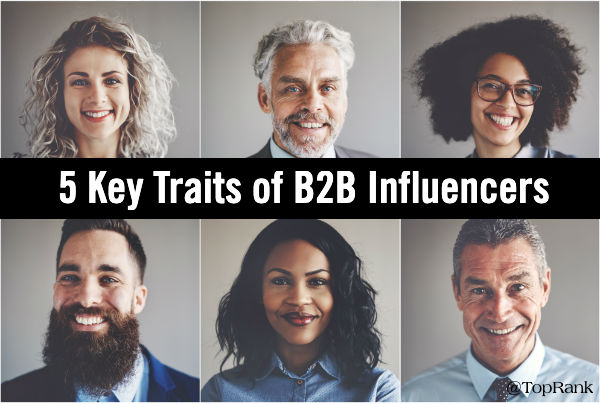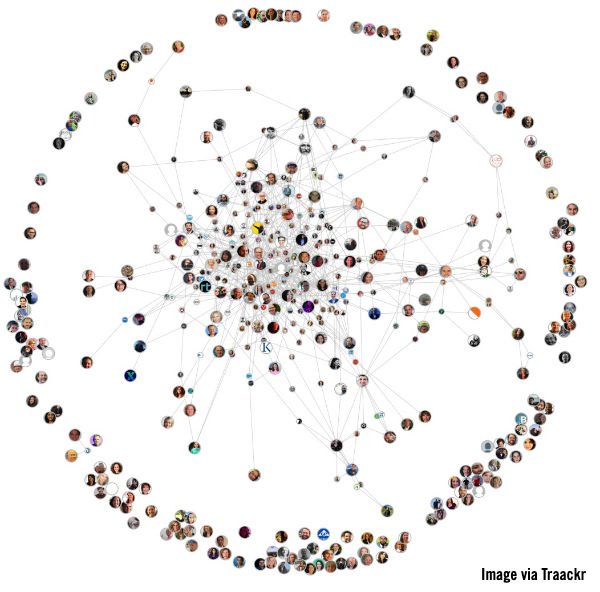https://feeds.feedblitz.com/~/618599240/0/convinceandconvertconsulting/
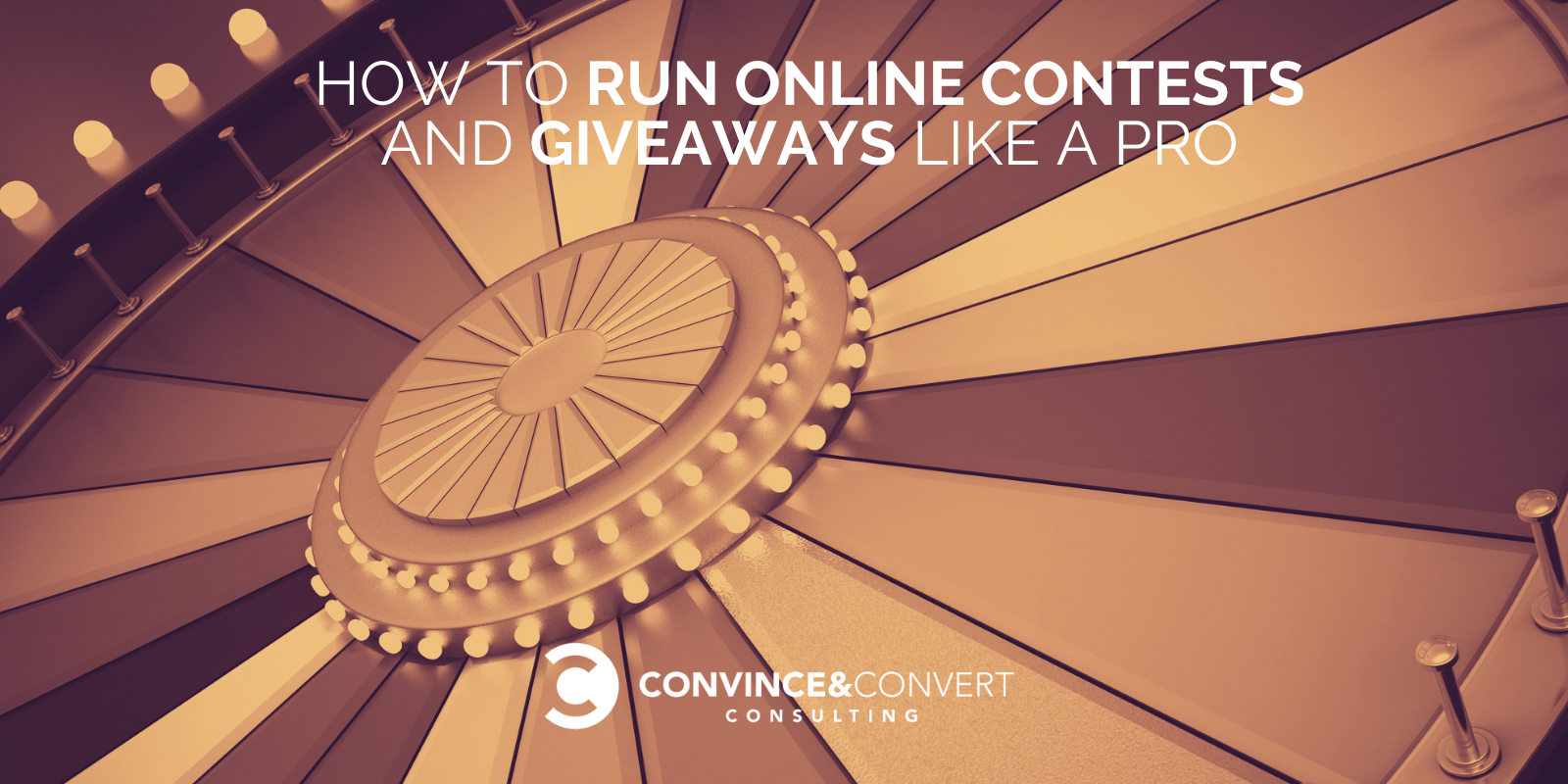
Wondering how to run brand contests and giveaways like a pro?
Contests and giveaways can be an amazingly easy and quick way to generate positive engagement, get more traffic to your website and, most importantly, generate more leads for your business.
That said, holding an online contest is not as easy as buying an iPad, posting a contest on Facebook and then waiting for the results to come in.
You might get lots of people interested and participating – and more likes than you ever expected on a post – but, at the end of the day, if you’re not getting the right people signing up for your contest or giveaway (i.e. your target audience), you’re not going to get a return on your investment.
In this post, I’m going to show you how to run contests and giveaways like a pro – so that you’re not just doing a contest for the sake of it but actually reaching your goals for your marketing strategies.
Why run online contests and giveaways?
As I mentioned in the introduction, contests and giveaways are a great way to get marketing results quickly and help accomplish the following:
- Boost engagement with your followers
- Generate new social media followers
- Get more traffic to your website
- Grow your email list
- Produce more leads and sales for your business
Contests and giveaways are interactive by nature, and people often love them – after all, they’re an opportunity to win something that people want or need.
What’s more, contests and giveaways require participants to leave their details with you – and, with the right type of contest and prize, that means you can generate more leads for your business.
Plus, contests are a great way to generate more interest in your business and the products and services you offer – so, by promoting your products/services this way, you can even boost your sales considerably.
That being said, not just any contest will get you these results – you need to be very clear about your objectives, build a contest that supports these objectives, offer the right prize and promote your contest/giveaway extensively.
Step 1: Determine Your Contest Objectives
Before starting any new marketing plan or campaign, it’s important to take the time to establish what your campaign’s objectives are.
When you know what your objectives are, you can build a campaign that helps support these goals and helps you reach them.
First, consider your overall marketing and business goals – what do you want to achieve in the coming quarter?
Once you’re clear on those objectives, you can plan your contest goals to help you reach the results you want.
Here are some of the goals you can set up for your contest/giveaway campaign:
- Generate more leads/email subscribers
- Boost your sales
- Increase brand awareness of your brand or a specific product/service
- Get more social media followers
- Boost your audience engagement
- Drive more traffic to your business website
- Gather user-generated content
Once you know what your goal is, you can build a campaign that will help you reach that goal.
Step 2: Choose a Relevant Prize
The prize you offer in your contest or giveaway is one of the most important elements that can determine the success of your campaign.
If your prize is too generic – like, let’s say an iPad, which seems to be one of the most used prizes for online contests – you might get a lot of attention, but is it the right attention?
The thing is, everyone could use an iPad: from a 14-year old teenager who’s in a video-game phase to a 35-year-old marketing executive.
In other words, you’re going to get a mishmash of people signing up for your contest, none of them potential customers for your business.
Whatever your contest goal is, whether it’s to get more leads or more engagement, the key is to get these results from the right people.
To do so, you need a prize that will only appeal to your particular target audience.
Ideally, your prize should be brand-related, as well as something that your target audience wants.
For example, one of the easiest ways to offer a good prize is to use your own business’s products or services, like this example from Qwertee, who gave away 30 free t-shirts as part of their giveaway (and yes, they sell t-shirts).
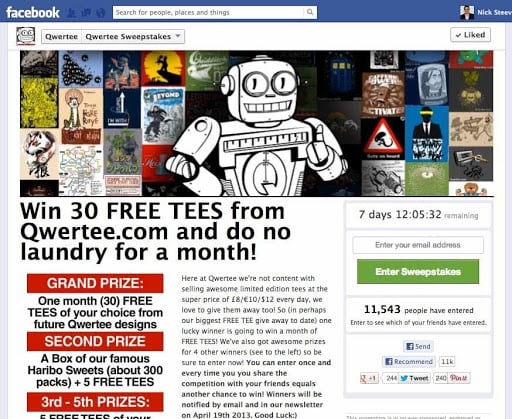
Facebook Contest Example from Qwertee
The thing is, when you give away something related to your products or services, you’re going to get the right attention: not only freebie-seekers but also people who would genuinely want or need your products/services.
When you give away something related to your products or services, you’re going to get the right attention: not only freebie-seekers. #contest #marketingtip
Click To Tweet
Here are some of the targeted, brand-related prizes you can offer:
- Coupon codes and discounts to be used on your website/in-store
- Your products
- Access to your services
Also, you should make sure to showcase the value of the prize – it’s another great opportunity to promote your business and your products/services and show people why they’re so valuable, like you can see on this contest landing page from Lucille Roberts.
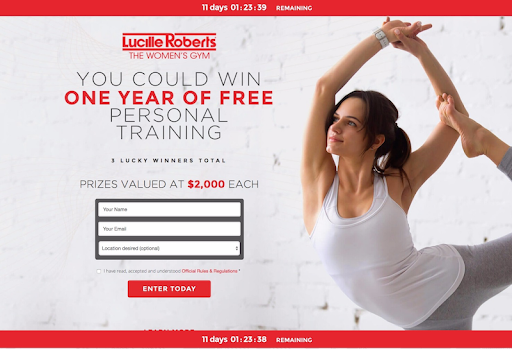
Contest Landing Page Example from Lucille Roberts
Here’s another example, from Riedel UK, offering up a beautiful set of their wine glasses as a contest gift.
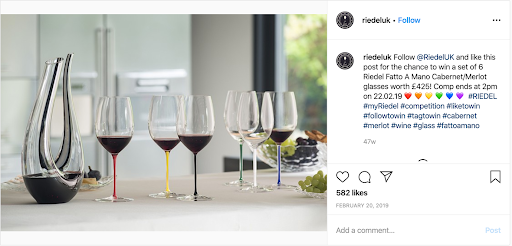
Instagram Contest Example from Riedel UK
The reality is that you might get fewer participants than you’d want this way (or, at least, compared to if you were giving away a tablet or something similar that appeals to a wider audience), but the idea is to get targeted participants. You want to get real leads and real engagement from people that are likely to be converted into your customers down the line.
Step 3: Design Your Contest
Once you know what you want to achieve with your contest and have decided on a prize, you can start putting together your contest or giveaway; there are numerous types of contests/giveaways, such as:
- Photos and video contests
- “pick your favorite” contest
- Mention and/or hashtag contest
- Writing or essay contest
- Instant win contests
- The “refer-a-friend” contest
- And, of course, giveaways, which are similar across platforms
In order to run a successful contest or giveaway, you can use a number of tools to help create your contest, publish it on the channels you want, as well as manage your participants and assign winners fairly.
Here are some useful contest tools to consider for your campaign:
Easypromos
Easypromos is one of the most popular options for creating this type of interactive content. You can use it to create giveaways, contests, games and quizzes, as well as coupons and codes for special offers. In total, there are about 30 different applications to choose from.
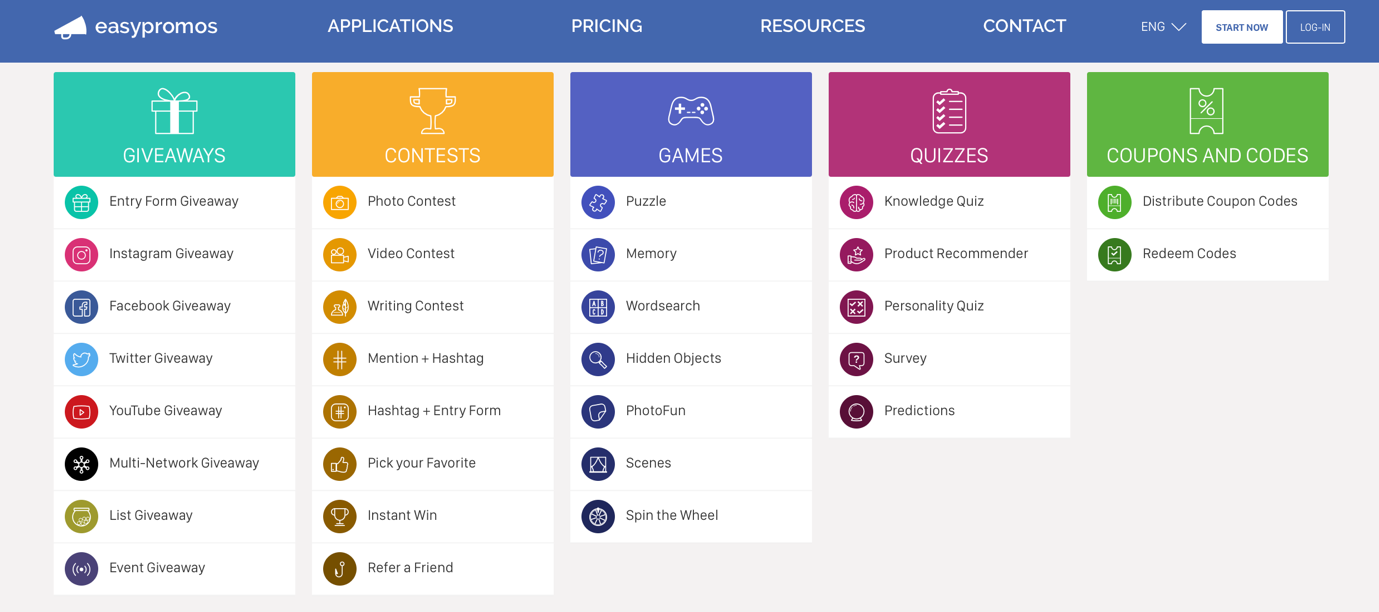
Easypromos Interactive Content and Contest Tool
In addition, as you might notice above, it works on a variety of online platforms, including Instagram, Facebook, Twitter and YouTube, as well as your own website and even via email newsletters.
There’s an easy-to-use drag-and-drop builder. Plus, you can monitor your campaigns’ results and ROI, as well as set up automated emails to nurture your leads.
Shortstack
Another popular solution is Shortstack. This robust tool allows you to create contests, giveaways and quizzes, as well as landing pages for your interactive content.
It also has various features to ensure you can run your contest from start to finish: email marketing features, drip emails and lead collection tools, among others.
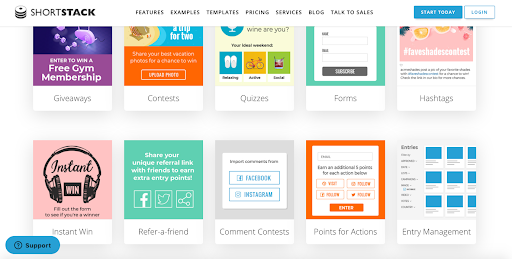
Shortstack Contest Tool
Their campaigns work on a variety of platforms, including all popular social networks, as well as on your website and on landing pages.
Here are some of the most important elements that need to be on your contest post/page:
- A title that gets people’s attention
- Your prize
- A very clear and visible call-to-action (usually, in the main title)
- Entry details
- Contest rules (make sure you’re following each platform’s rules too)
- Other contest details, such as the time frame for your contest and how the winners will find out
Step 4: Promote Your Contest Everywhere
In order to get the most out of your contest, make sure to promote it high and wide – the more people join in, the better.
Here’s what you need to do in order to promote your contest:
- First, create a landing page for your contest
- Send an email blast to your list and let them know about your contest and where they need to go to sign up (that email will probably have the biggest open rates you’ve seen so far!)
- Promote your contest across all social channels
- Promote your contest on your website and/or blog; for example, you can create a banner to promote it, use a Hello Bar or even write a blog post about it
- Create an ad campaign: if you’ve planned a really big contest and want to get the most out of it, it might be a good idea to invest in social media ads to reach a much wider audience
Conclusion
Contests and giveaways can be extremely powerful tools for your business. They offer this highly-effective, super-fast way to get results: more leads, more engagement, more traffic and so on.
Follow the steps outlined in this step-by-step guide, and you’ll be running high-performing contests and giveaways in minutes.
Just remember this: stop giving away iPads.
Unless you’re Apple, of course.
The post How to Run Online Contests and Giveaways Like a Pro appeared first on Convince and Convert: Social Media Consulting and Content Marketing Consulting.

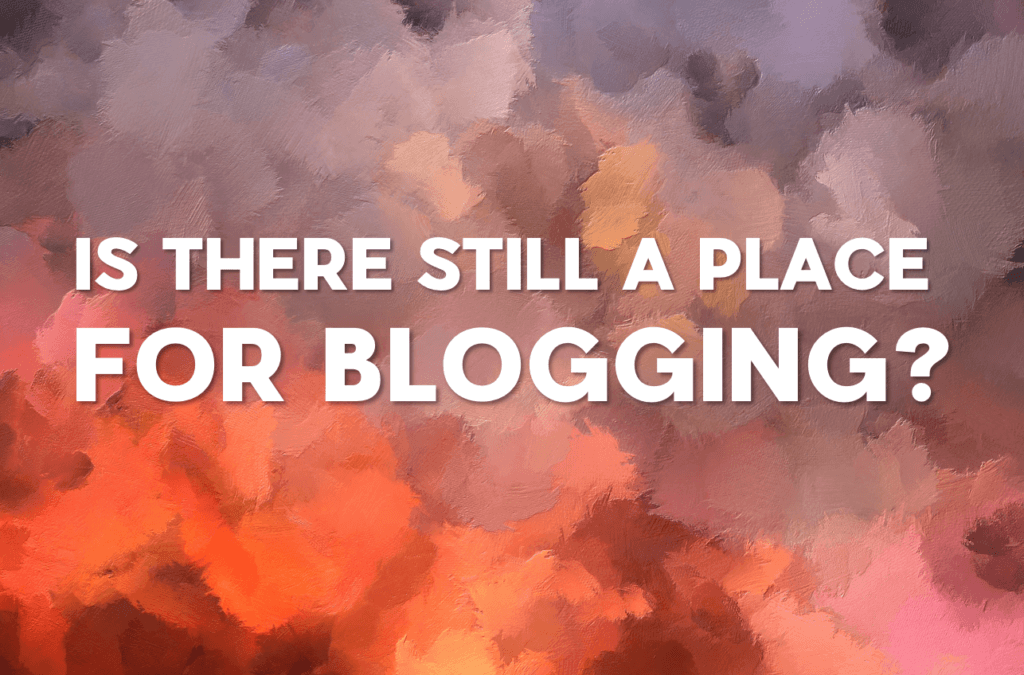
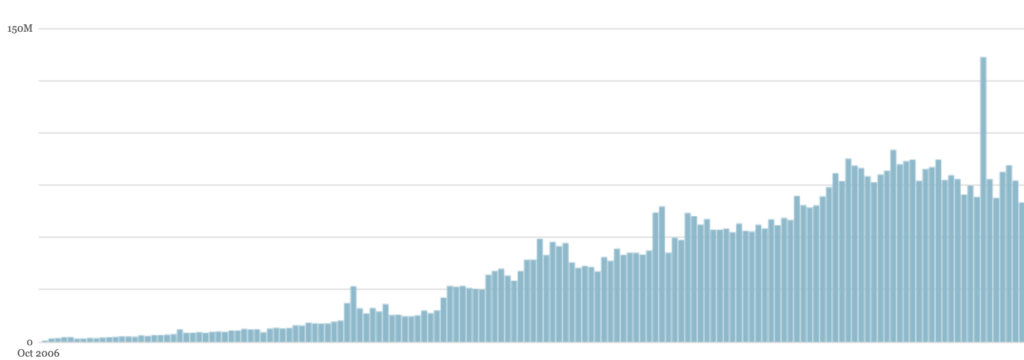

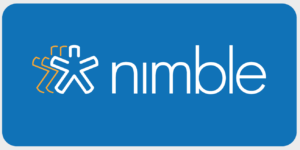 If you’re a business owner or an entrepreneur, you know how hard it is to stay on top of all your contacts and ensure that nothing is falling through the cracks. Nimble is the simple, smart CRM that works directly within Office 365 and G Suite.
If you’re a business owner or an entrepreneur, you know how hard it is to stay on top of all your contacts and ensure that nothing is falling through the cracks. Nimble is the simple, smart CRM that works directly within Office 365 and G Suite.
![]()
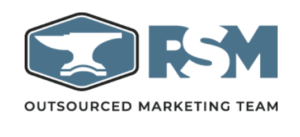 RSM Marketing provides an indispensable outsourced marketing department! Why struggle with turnover and staffing when RSM clients receive a marketing director and all the resources they need under a flat fee monthly subscription?
RSM Marketing provides an indispensable outsourced marketing department! Why struggle with turnover and staffing when RSM clients receive a marketing director and all the resources they need under a flat fee monthly subscription?







